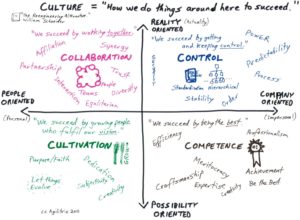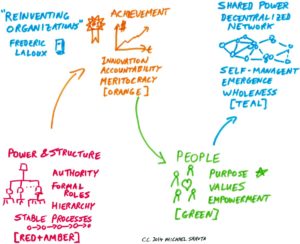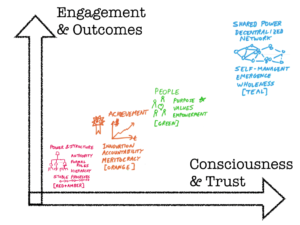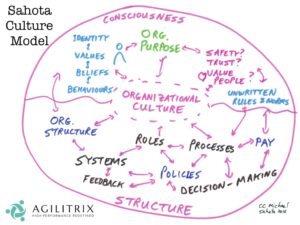The #1 Challenge with Agile is culture – Industry Research has consistently reported for years. Adaptation of a new way of working often doesn’t blend into “business as usual”. To succeed with Agile we need to understand culture and how to navigate it. And the key question is: Are you using the right culture model? Or less provocatively: How effective is the culture model you are using? Let’s examine some commonly used models and see how they compare.
The Schneider Culture Model? Nope.
Back in 2011/2012 I started to experiment with the Schneider culture model, to understand and shift organizational culture. My work and my blog post How to Make You Culture Work had a huge impact on the Agile community. (Just see how many other people use this image or have made their own version by copying the words and symbols in my diagram).
What I love about the model:
- It’s easy to understand.
- It doesn’t judge culture systems, so is makes it safer to talk about what is going on.
- It can be introduced in a workshop to create great discussions about what the culture actually is.
Why I stopped using it:
- It makes it OK to be in any given culture system – even though there are actually very clear differences in the performance of different culture systems.
- It is challenging to make a clear case for changing the culture.
The Competing Values Framework? Nope.

At a very high level one can understand this as more or less the same as the Schneider Model and has similar characteristics. My colleague Pete Behrens has a good explanation of the Advantages Competing Values Framework has vs Schneider Model. One of the advantages is that it links leadership behaviours to culture quadrants.
There is a very powerful insight shared by the authors Cameron & Quinn in “Diagnosing and Changing Organizational Culture: Based on the Competing Values Framework”:
“The highest performing leaders have developed capabilities and skills in each of the four quadrants.”
High performance comes from transcending and integrating these culture quadrants. Which means there is no single definition of high performance culture … it is a transcendent property with integration of all cultures. Surely there is a model that provides a clearer path…
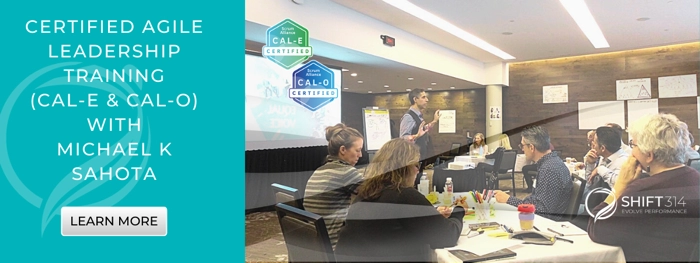
The Laloux Culture Model? Yes!
The model comes from Reinventing Organizations – a landmark book in the development of organizations that unleash the talents of people to get astonishing results. It is a simplified and modified version of Spiral Dynamics. The book is grounded in case studies from around the world of organizations that are succeeding in a new way of working. In the diagram above, I show my variant of the model which is simplified and has a more relatable definition for Teal. Please read here for an explanation of the Laloux Culture Model.
When we map out the research findings and data we can observe very clearly that all culture systems are not actually equal. In fact, there is a clear relationship: Organizational results and worker engagement increase as trust and consciousness (or mindset) increases.
The Laloux Model is very powerful – it shows leaders very clearly that the organizational system they are responsible for is not high performing. It requires a great deal of compassion and understanding to relate this way for leaders to actually hear. But when they do hear, it activates a great deal of motivation.
Why does it work so well? One is that it is based on real company research. The other and more important one is that everyone wants to “Go Teal” after looking at the model. It sparks a desire for greatness that is needed to sustain investment in growth. It helps leaders understand that their Red/Orange culture is actually low performing. In contrast, people can walk away from Schneider or Competing Values models and feel like they are doing OK.
Note: I am not advocating that anyone “Go Teal” – that is a trap. For further insights and guidance on this, please see: How To Change Your Organizational Culture
The Sahota Culture Model? Yes!
It turns out that using the Laloux Culture Model on it’s own is not sufficient to navigate the complexity of working with organizational culture. It is great to provide motivation and desire, however, effective change requires a deeper understanding of how to understand the concept of culture itself.
The Sahota Culture Model provides a clear understanding of culture through identification of the interconnected elements that shape culture. It also highlights the need to focus not just on Structures but also on the Consciousness (or Mindset) of a system. We often fall into the trap of focusing on structures (especially process) rather than focus on the people and how they are working together. This model reminds us that it’s really about the consciousness (or mindset) and the people, not about the structures or process.
Further Reading
I have written extensively on organizational culture change. There are two good starting places to explore my blog posts:


